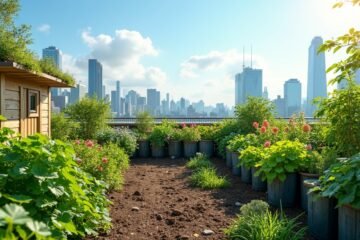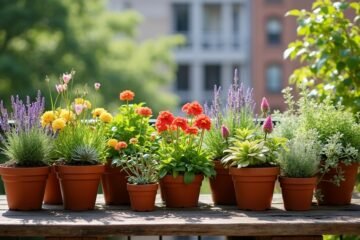Following a seasonal planting guide is like having a treasure map for your garden! It helps you plant tomatoes in warm spring soil so they can grow juicy and luscious, while leafy greens will savor the cool fall air, becoming sweeter and tastier! Plus, by timing your planting right, you’ll boost your harvest quality and reduce pesky pests. It’s a win-win! Keep exploring those growing tips, and your garden will thank you with vibrant, thriving plants!
Understanding Seasonal Planting Cycles

Have you ever wondered why some plants seem to thrive during certain seasons while others struggle? It’s as if they’re in a dance with nature! Understanding seasonal planting cycles can reveal your garden’s full potential. By following effective planting schedules, you give various seasonal varieties the best chance to flourish. For example, consider planting tomatoes in early spring when the soil warms up, making them explode with juicy flavor. Meanwhile, leafy greens love the cooler fall air, growing sweeter as temperatures drop. It’s all about timing and knowing which plants get along with seasonal changes! So, dare to experiment with this nature-inspired rhythm, and watch your garden transform into a vibrant masterpiece! Who knew planting could be this much fun?
Maximizing Yield and Quality
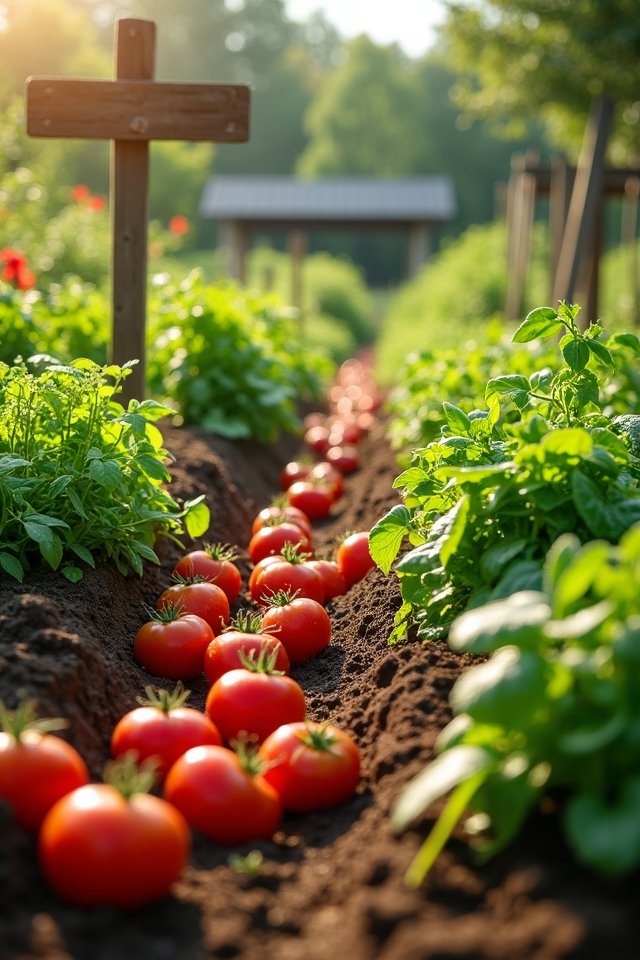
When you aim to maximize yield and quality in your garden, it’s like tuning a fine instrument—you want everything to harmonize beautifully! By practicing crop rotation, you’re not just changing what you plant; you’re rejuvenating your soil and boosting nutrient availability! Imagine watching your tomatoes thrive when they follow a bed of legumes—it’s like giving them a cheerleader!
Pairing plants through companion planting adds that extra magic; think of basil and tomatoes as best buddies, enhancing each other’s flavors. They’re practically a garden love story! So, immerse yourself in your planting calendar, map out your rotations, and practice those partnerships. Your harvest will soon be bursting with flavor, color, and, let’s be honest, a sense of garden pride! 🌿
Reducing Pest and Disease Issues
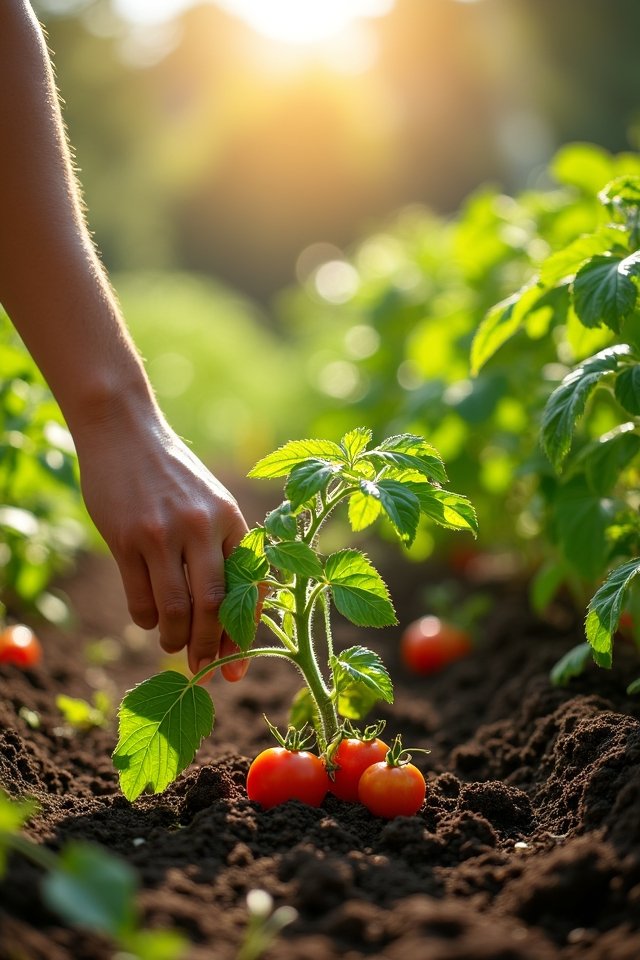
Just as you skillfully rotate crops to boost yield and quality, keeping pesky pests and diseases at bay is equally important for a thriving garden. Think of it as crafting a protective shield around your plants! Here are five innovative strategies for effective pest control and disease prevention:
- Companion Planting: Plant marigolds alongside veggies to repel harmful insects.
- Natural Predators: Attract ladybugs; they’re tiny heroes against aphids!
- Healthy Soil: Enrich soil with organic matter to promote strong, resilient plants.
- Timing Is Everything: Follow seasonal guides to plant at just the right time.
- Regular Monitoring: Check plants weekly; catching issues early saves time and drama!
With these tips, you can revel in a vibrant, pest-free harvest! Isn’t gardening delightful?
Optimal Use of Resources
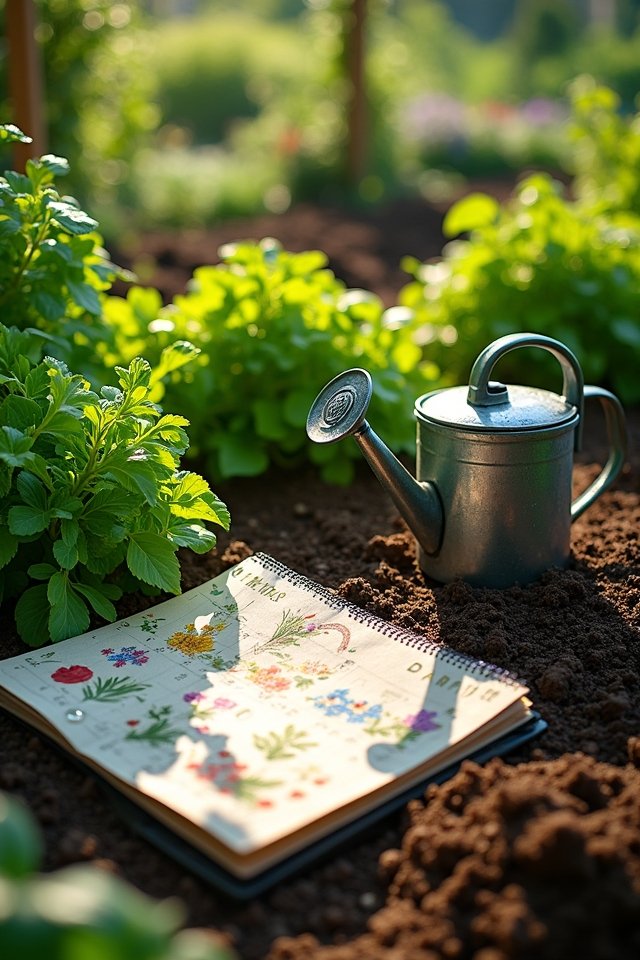
Maximizing your garden’s potential is like revealing a treasure chest filled with vibrant blooms and bountiful harvests! By focusing on resource management, you’ll not only save money but also enhance your garden’s health. Think about it—efficient watering can be your secret superhero! Instead of drowning your plants, try a drip irrigation system. It delivers water straight to the roots, just like a rejuvenating drink on a hot day. Plus, grouping plants with similar water needs can make your life easier. Ever tried mulching? It keeps moisture locked in while reducing pesky weeds. So, sprinkle some innovation into your gardening routine, and watch your garden flourish like never before! Isn’t it exciting to find new ways to thrive?
Enhancing Soil Health and Biodiversity

While you might think of soil as just dirt, it’s actually a bustling ecosystem brimming with life! By enhancing soil health and biodiversity, you’re fostering a vibrant garden. So, how can you supercharge your soil?
- Use soil amendments like compost and peat moss to nurture beneficial microbes.
- Implement crop rotation to disrupt pest cycles and promote nutrient balance.
- Encourage earthworms—they’re nature’s tillers, improving aeration and drainage!
- Plant cover crops to protect your soil from erosion and increase organic matter.
- Test your soil regularly! This helps you understand its needs and boosts your innovative garden plan!
Transform your patch of earth into a sustainable sanctuary, and watch your plants thrive with joy! Isn’t gardening just the best?
Planning for Continuous Harvests
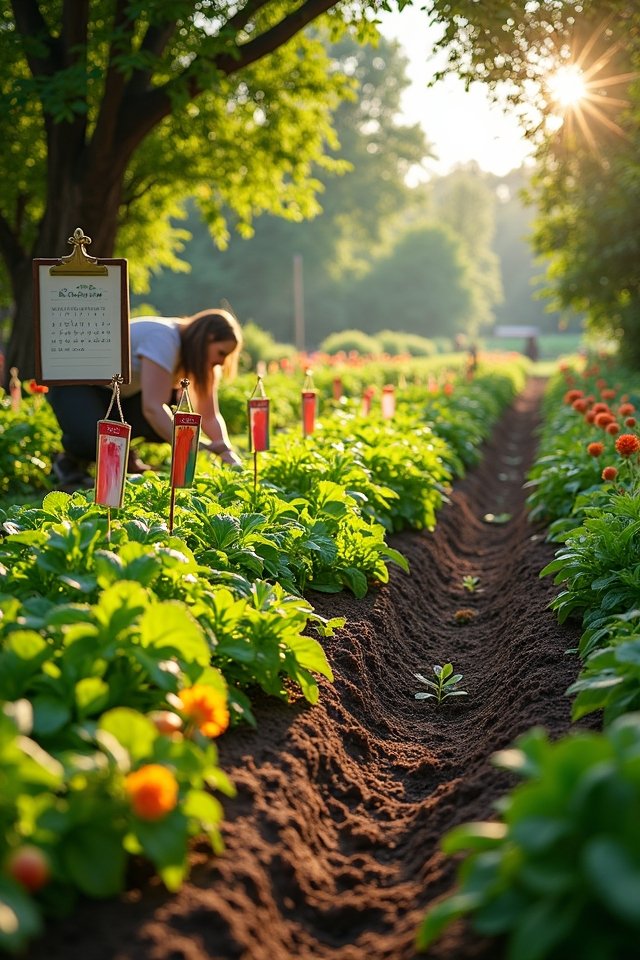
Soil health sets the stage, but what’s next? To achieve continuous harvests, think dynamic! Crop rotation keeps your garden energized, preventing nutrient depletion while minimizing pests. Picture lush tomatoes followed by vibrant greens—delicious, right? Pairing plants through companion planting brings even greater yield. Imagine those friendly marigolds keeping pesky bugs at bay while your squash thrives nearby. It’s like having a garden bouncer!
Don’t forget to stagger your planting times. Pop in quick-growing radishes alongside slower-maturing carrots, and you’ll have a colorful plate in no time! Adopt these innovative techniques, and watch your garden transform into a bounty that keeps on giving. Ready to start? Your taste buds will thank you, and so will your wallet! Happy planting!
Adapting to Local Climate Conditions

Though you may dream of a lush garden filled with vibrant colors and delicious flavors, adapting to local climate conditions is essential for turning that dream into reality! Consider the enchanting microclimate effects in your own backyard. With regional variations in temperature and moisture, knowing your environment is key. You can:
- Observe shaded areas for cool-weather crops.
- Use raised beds for better drainage in damp spots.
- Check your soil’s warmth before planting tender seedlings.
- Utilize windbreaks to protect delicate plants.
- Group plants with similar needs for efficient watering!
Frequently Asked Questions
How Can I Create My Own Seasonal Planting Guide?
Imagine you’re a chef crafting the perfect recipe! Start by creating templates for each season, listing your favorite veggies and flowers. Track your progress like a treasure map, marking when each plant gets sown. For instance, jot down that tomatoes thrive when it’s sunny! Choose a quirky little notebook, add stickers, and watch your garden grow each month. Isn’t it thrilling to see your plants flourish as you innovate your green thumb?!
What Tools Do I Need for Seasonal Planting?
You’ve got to gear up with the right planting tools! Think sturdy gloves, a trusty trowel, and a hand rake that feels just right in your grip. Don’t forget a measuring tape for precise spacing—after all, plants deserve some personal space too! Compost bins are gardening essentials you can’t ignore; they turn kitchen scraps into golden soil! Ready to dig in? Your garden adventure’s just around the corner!
Are There Specific Planting Times for Rare Plants?
You might think planting rare plant varieties is as simple as throwing seeds in the dirt—wrong! Each of these botanical gems has ideal planting times, like a traffic light directing you when to go. For instance, a unique Blue Lotus prefers spring, while that quirky Ghost Orchid loves a warm summer hug. Know your plants, and treat them like they’re royalty! Who wouldn’t want vibrant, unusual beauties in their garden? Let’s dig in, shall we?
How Can I Extend My Growing Season?
You can easily extend your growing season! Think about using cold frames; they’re like cozy blankets for your plants, protecting them from chilly nights. And if you immerse yourself in greenhouse gardening, you’re stepping into a world of possibilities! Imagine fresh tomatoes in winter! Start with compact herbs or vibrant greens to kick things off. By marrying warmth and creativity, you’ll transform your garden into a year-round paradise. Ready to grow? Let’s do this!
What Are Common Mistakes When Following a Planting Guide?
You might think you’re on the right track with your planting guide, but whoops—common mistakes lurk! Ignoring ideal planting timing can lead to sad, wilting leaves. Oh no! Another is skimping on soil preparation; you can’t plant seeds in a dirt sandwich! Make certain you’re mixing organic matter into your soil, like a well-blended smoothie. Check your guide often, and treat it like a recipe—precision is key to a thriving garden! Isn’t that exciting?
